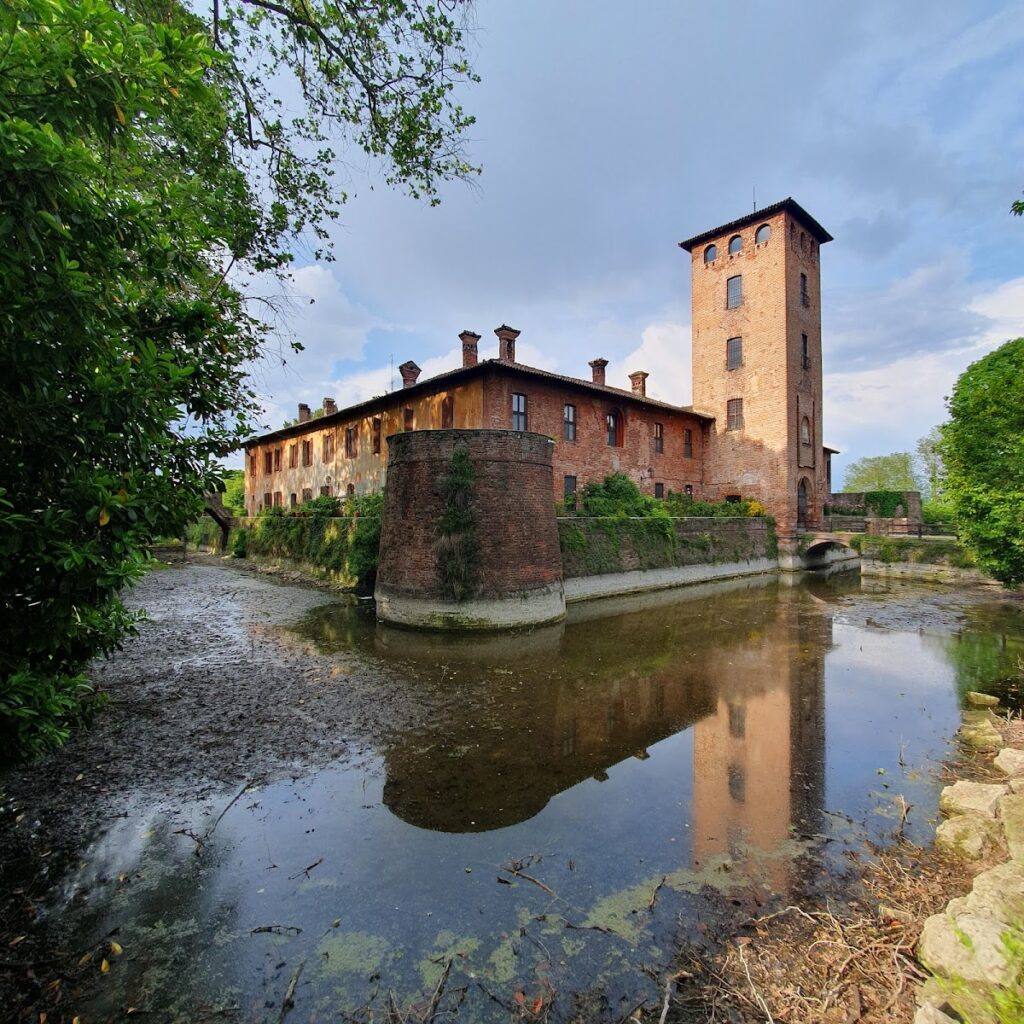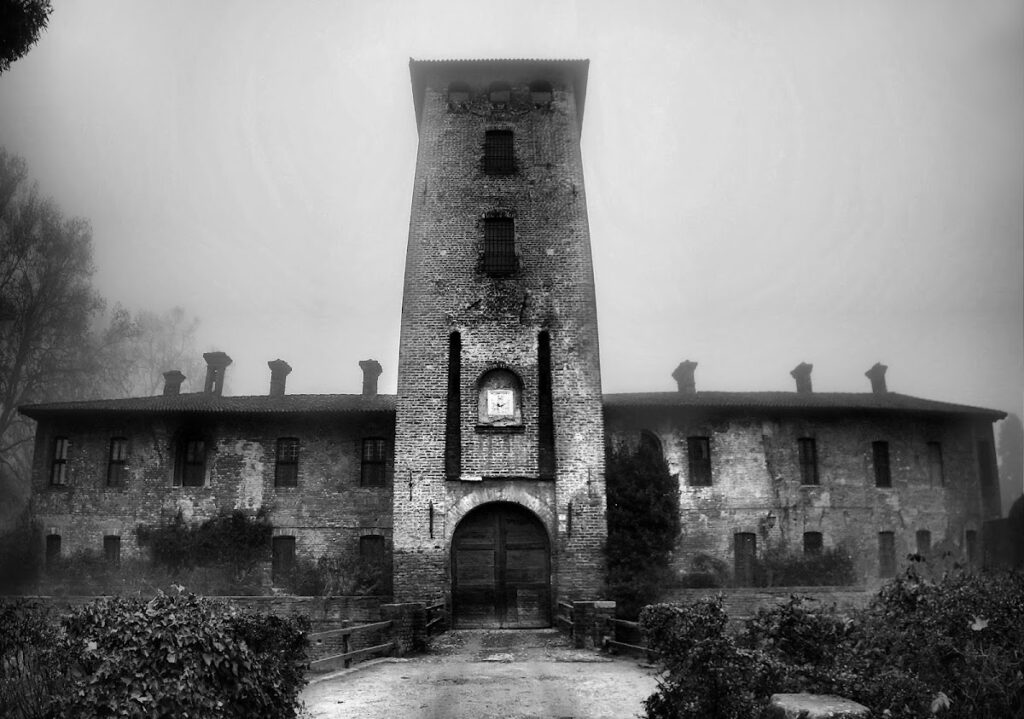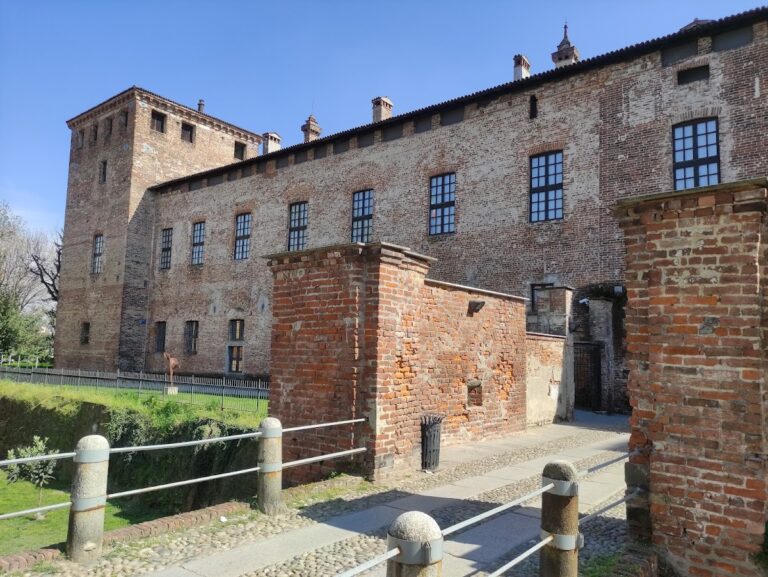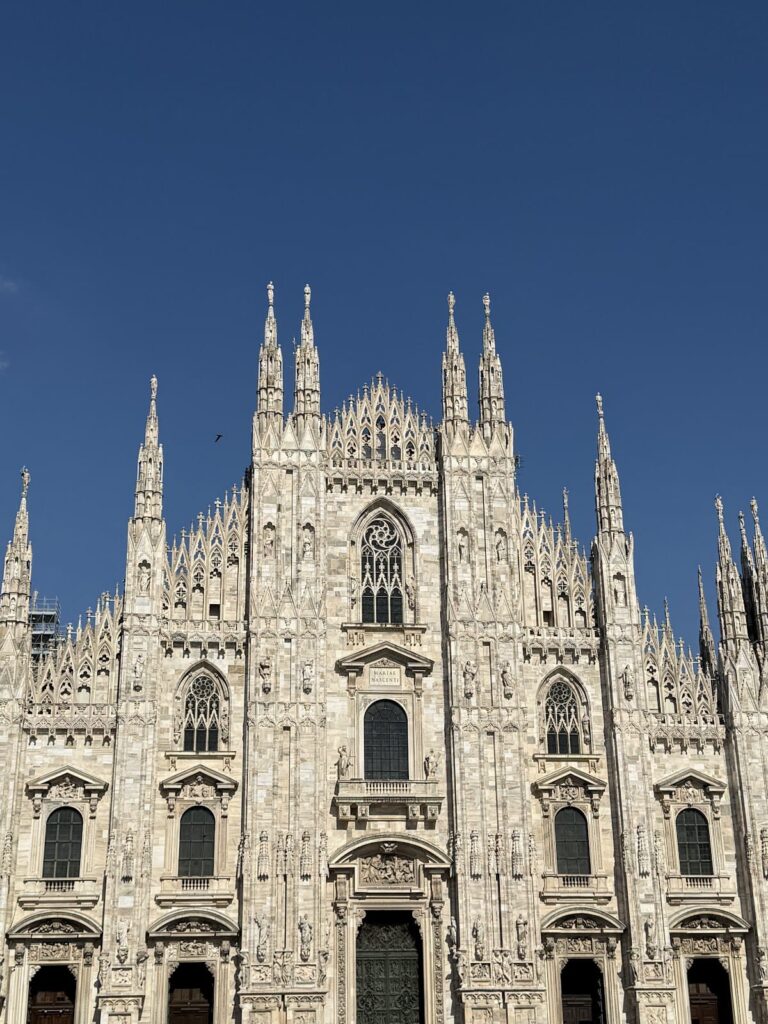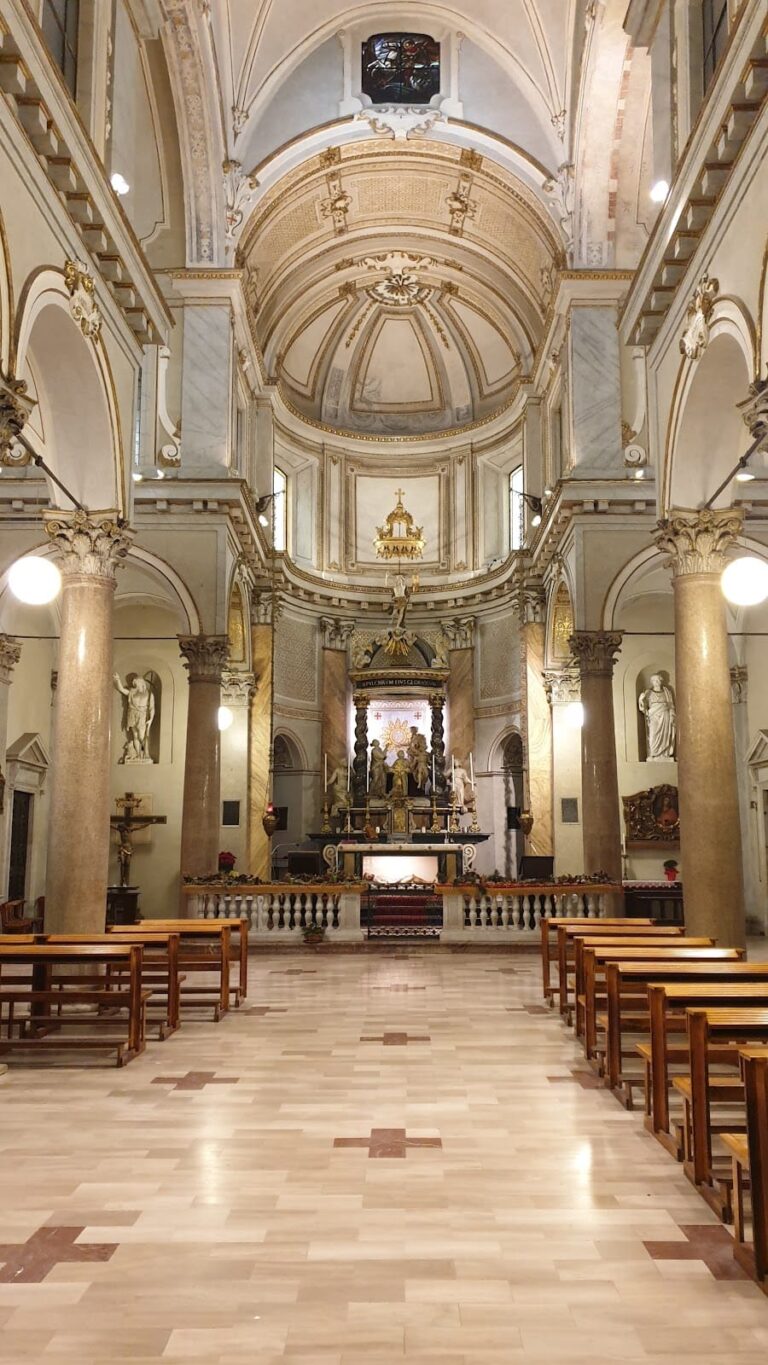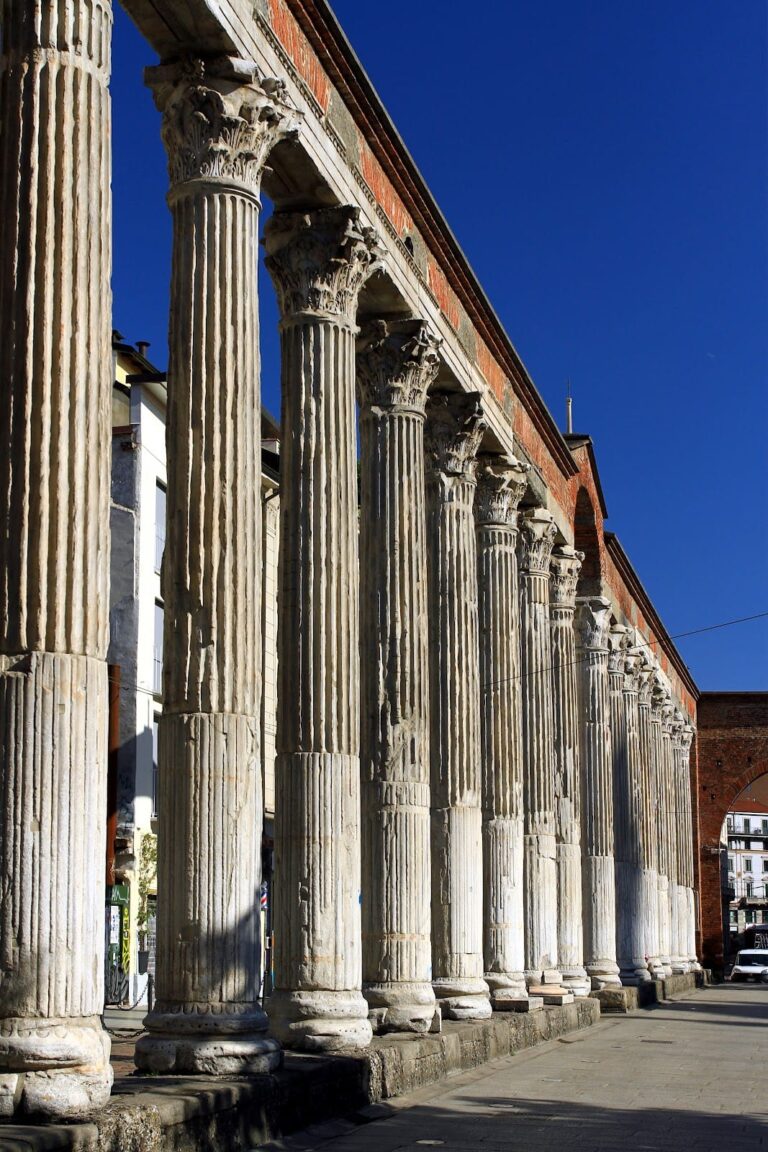Borromeo Castle: A Historic Fortress and Residence in Peschiera Borromeo, Italy
Visitor Information
Google Rating: 4.3
Popularity: Low
Google Maps: View on Google Maps
Official Website: www.castelloborromeo.it
Country: Italy
Civilization: Unclassified
Remains: Military
History
Borromeo Castle is located in the municipality of Peschiera Borromeo in modern-day Italy. It was originally developed by the Milanese Borromeo family during the 15th century, a period marked by the rise of prominent noble families in northern Italy.
The site began as a fortified farmhouse, or cascina, established in the early 1400s by Vitaliano I Borromeo, a banker serving Duke Filippo Maria Visconti of Milan. In 1432, a ducal privilege formally authorized Vitaliano to fortify the structure, allowing the addition of bastions, a moat, drawbridges, and towers, transforming the farmhouse into a small defensive residence. This development coincided with Vitaliano acquiring the land from the Ospedale Nuovo, a Milanese hospital institution that had owned the property since the 13th century.
During the 15th and early 16th centuries, the castle was both a symbol of the Borromeo family’s ascent and a modest defensive stronghold. It witnessed military events such as an unsuccessful assault by Gascon troops in 1502. Notably, the castle hosted Francesco Sforza, a militarily skilled lord who became Duke of Milan, who rewarded the Borromeo family with feudal titles including the countship of Peschiera in 1461, further elevating their social standing.
The castle’s defensive role diminished following Spanish occupation of Milan. During this time, the four corner towers were likely reduced in height to prevent the site from being used as a stronghold in uprisings. Ownership passed within the Borromeo family, including a period when San Carlo Borromeo held the castle between 1562 and 1567 before transferring it to his uncle Giulio Cesare Borromeo.
In the late 16th century, Renato Borromeo, cousin to Cardinal Federico Borromeo, led a significant transformation, converting the fortress into a residential palace. This renovation enriched the castle’s interiors with elaborate decorations and frescoes, marking a shift away from military utility to representational and domestic functions.
Throughout subsequent centuries, the castle remained in private hands, experiencing intermittent periods of neglect and restoration. A notable 20th-century restoration began after Count Giancarlo Borromeo reacquired the property in 1926, preserving its historical and architectural heritage.
Remains
Borromeo Castle features a quadrangular plan oriented along a north-south axis, characteristic of several Borromeo estates. Three main wings of the building frame a central courtyard, while a fourth wing on the eastern side incorporates a sloping scarpa wall descending into the surrounding moat. This moat is continuously filled with water sourced from a natural spring and is among the few surviving examples in the Lombardy region. Notably, the moat echoes the original fish pond, or “peschiera,” from which the locality derives its name.
The main western entrance is distinguished by a prominent square tower projecting beyond the building line. This tower originally contained a drawbridge system supported by timber beams, some of which remain visible in the entrance wall. Functionally, the tower served as a lookout, defense point, and alarm station. Surrounding the castle are four detached, low round corner towers with truncated conical shapes rising over the moat. These once had a military purpose but were later lowered, likely during Spanish rule, to reduce their military threat. In more recent times, the corner towers have been adapted into belvederes featuring stone staircases and iron railings; the northeastern tower uniquely includes a small covered dock accessible via a few descending steps.
In front of the main tower stood a ravelin—a detached triangular fortification typical in medieval castles—accessed by a covered bridge over the moat. This structure was lost by the 17th century, with only foundational remains still visible at ground level. The castle’s eastern facade lacks a parapet and exhibits irregular brick masonry, with evidence of bricked-up openings and various repairs that attest to ongoing maintenance and structural reinforcement through the centuries.
Inside, the castle preserves several richly decorated rooms. The vestibule, known as the Hall of Armors, features a coffered ceiling adorned with lobed floral designs in white, red, and blue. It also contains a large stone fireplace and a stone slab floor. The main staircase is decorated with late 16th-century grotesque frescoes attributed to Cesare Baglione, incorporating symbolic and esoteric imagery such as fire, vases, universal animal emblems, and astrological signs.
The principal hall, or Salone, is extensively frescoed in warm hues and contains three windows on each side. A substantial stone fireplace occupies one wall beneath a decorative coffered ceiling. Below the ceiling runs a continuous frieze populated by grotesques and landscape scenes, interrupted by eight octagonal panels depicting allegorical themes accompanied by Latin inscriptions. These paintings date from approximately 1580 to 1596, reflecting the castle’s late Renaissance decorative phase.
Several other rooms preserve fresco cycles from varying periods. The First Mill Room displays 17th-century landscapes featuring a two-wheel hydraulic mill, a motif continued in the Second Mill Room with frescoed arches and another depiction of a mill wheel. The San Carlo Room commemorates the saint’s historical presence and contains 16th-century grotesques and landscape frescoes on its upper walls, although lower sections feature 19th-century additions of lesser artistic quality. The Lakes Room offers Baroque-style paintings illustrating water, boats, and foliage.
A dedicated Borromeo Properties Room shows three views painted after 1652: Isola Bella on Lake Maggiore, the town of Arona with its demolished fortress (the birthplace of San Carlo Borromeo), and the Villa Borromeo at Cesano Maderno. This cycle reflects the family’s possessions and status during the mid-17th century.
Marine themes appear in the Sea Room, decorated with paintings surrounding a fireplace. The Castle Room contains a 1763 fresco portraying Borromeo Castle itself, including its central tower and former ravelin, providing valuable visual documentation of the site’s historical appearance.
The Landscape Room, facing the castle’s forecourt, exhibits large pastoral scenes featuring hills, water, trees, clouds, and birds, stylistically aligned with 17th-century landscape painting traditions.
Connecting these rooms is a double gallery leading to a private chapel dedicated to San Carlo Borromeo. Constructed or adapted between the late 16th and early 17th centuries, the chapel interior includes grotesque frescoes, putti, and images of liturgical and musical instruments on its walls and vaulted ceiling. These decorations relate stylistically to those in the main hall and are attributed to Cesare Baglione. Two additional frescoes depicting the Baptism of Christ and St. Francis receiving the stigmata are by a different, lesser-known artist. The chapel’s altar contains a 17th-century painting of the Madonna with Child and saints.
Externally, the castle’s brick walls display heraldic decorations such as the Borromeo family coat of arms, known as Humilitas, along with mullioned windows featuring pointed arches. Above the main entrance stands a marble relief engraved with the initials CO.I.B., referring to Count Giovanni Borromeo.
The castle grounds comprise a spacious courtyard featuring grass, plants, and flowers, bordered by a portico of nine arches supported by ten columns. Beyond the courtyard lies an Italian-style garden with terraces, centuries-old trees, flower beds, fountains, and water basins, presenting a harmonious blend of military and noble residential elements.
Overall, the moat, corner towers, and their layout indicate that defensive structures were later additions to the original rural building. The lowering of the towers during Spanish rule demonstrates the strategic measures imposed to limit fortification capabilities. Today, Borromeo Castle remains a private estate preserving a rich layering of historical, military, and artistic heritage.
